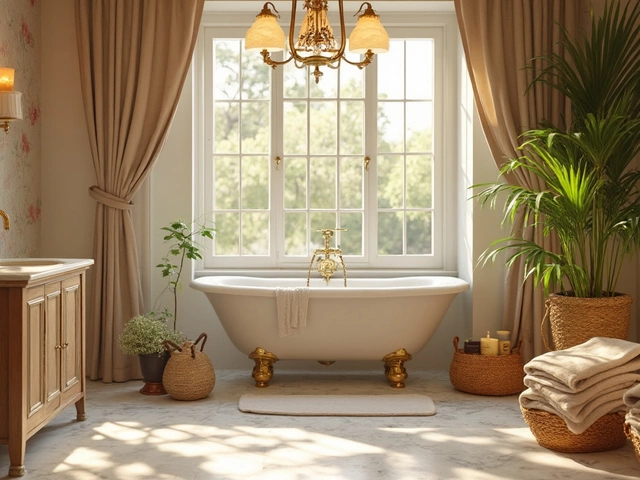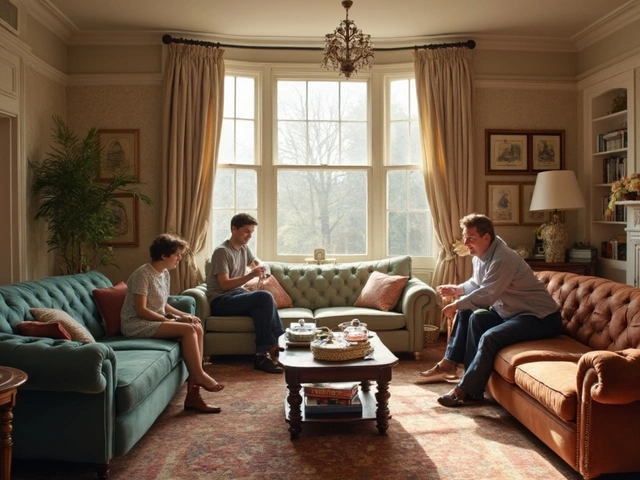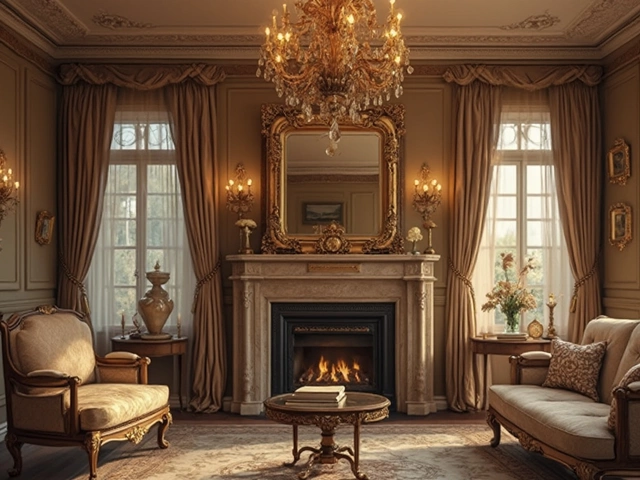Good Budget for a Sofa: What to Spend and Why
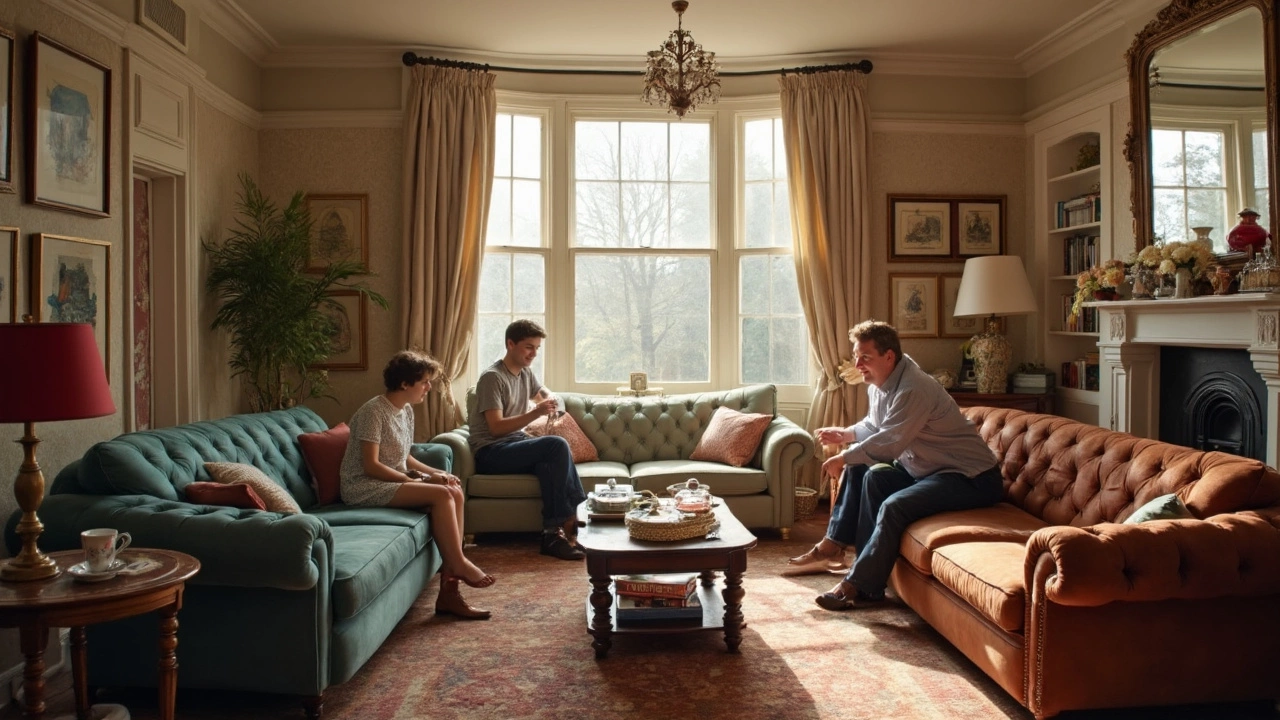
You walk into a store and spot a sofa for $400, then see another for $2,000 right next to it. What’s actually a good budget for a sofa? Spoiler: it’s not just about spending more for the sake of it. Most people think more money always means better quality, but that’s not always what you get.
The sweet spot for sofa shopping really depends on how you’ll use it. If the couch is just for looks in a barely-used room, you won’t need to invest like you would in the family TV zone. For a solid, mid-range sofa, most people end up spending between $800 and $2,000. This usually gets you a sturdy frame, better fabric, and stuff that won’t fall apart in two years.
- Breaking Down the Costs: Sofa Price Ranges
- What Impacts Sofa Prices?
- Setting a Realistic Budget for Your Needs
- When to Splurge vs. Save
- Tips for Getting More Sofa for Your Money
- Avoiding Common Sofa Shopping Mistakes
Breaking Down the Costs: Sofa Price Ranges
If you search for a sofa budget online, the price tags are all over the place. Some start under $300, while others stretch past $5,000. But what are you actually paying for at each level?
- Under $500: These are your basic, mass-produced couches. Think discount furniture chains and basic online brands. They’re usually made with particle board, thinner cushions, and less durable fabric. Good for a guest room or temporary space, but don’t expect miracles—most won’t survive long in a high-traffic living room.
- $500-$1,000: In this range, you’ll start finding better frame materials like hardwood or engineered wood, denser cushions, and a wider selection of styles. These sofas might last through a few years of regular use, especially if you treat them gently.
- $1,000-$2,000: This is the sweet spot for most people who want quality without going overboard. Expect kiln-dried hardwood frames (which means less warping over time), comfy foam or down-blend cushions, nicer fabrics, and attention to craft. These sofas should last at least five to ten years with normal use.
- $2,000 and up: Now you’re in premium territory—designer brands, custom upholstery, or luxury finishes. You’ll get hand-built frames, high-end fabric choices, and maybe even eco-friendly or hypoallergenic materials. These are long-term investments, but you’re also paying a bit for the name.
Here’s a quick look at how sofa price guide numbers break down in the real world:
| Price Range | What You Get | Common Uses |
|---|---|---|
| Under $500 | Particle board frame, basic fabric | Dorms, starter apartments |
| $500-$1,000 | Entry-level hardwood, better fabrics | Spare rooms, light family use |
| $1,000-$2,000 | Solid wood, premium foam, variety of fabrics | Main living spaces |
| $2,000+ | Luxury materials, customizable | Lifelong furniture, showcase rooms |
When figuring out how much for a sofa, match your expectations with your budget. Consider how often you’ll use it and if you want style, comfort, durability—or the rare magic combo of all three.
What Impacts Sofa Prices?
Sofa prices jump all over the map, and it’s not just a brand name thing. The real differences come down to what’s inside, what you see on the outside, and even how it was built. Understanding these details can help you figure out the best sofa budget for your situation.
First off, the frame sets the base price. Solid hardwood frames—like oak, ash, or maple—almost always cost more than softwoods or particleboard. Cheap frames can warp or squeak way earlier than you want. Next, check the suspension. Eight-way hand-tied springs are the gold standard and cost more, while webbing or sinuous springs are more common in lower price ranges.
Now look at the cushions. Those $400 sofas? You’re usually getting basic foam that flattens out fast. At the $1,000+ mark, you’ll often find high-resilience foam or even a mix that holds up better, keeps its shape, and just feels nicer to sit on. Want super plush? Look for down-blend, but it’s pricier and needs fluffing.
Upholstery is another big driver of price. Durable fabrics like performance polyester or crypton are designed for spills and are more expensive. Natural leather (the real kind, not “bonded” or “faux” leather) can send the price way up, too, but holds up like nothing else. Loud prints or trendy colors usually cost extra since they’re not made in bulk like basic neutral fabrics.
| Component | Low-End | Mid-Range | High-End |
|---|---|---|---|
| Frame | Plywood/Particleboard | Mixed or Some Hardwood | Solid Hardwood |
| Suspension | No Springs or Basic Webbing | Sinuous Springs | Eight-Way Hand-Tied |
| Cushion Fill | Basic Poly Foam | High-Density Foam | Foam with Down/Memory Foam |
| Upholstery | Standard Polyester | Performance Fabrics | Top-Grain Leather |
Don’t forget labor costs. Handmade or bench-made sofas, mostly found in the higher sofa price guide range, are more expensive, but you get more attention to detail. Mass-produced pieces are cheaper and sometimes cut corners on quality control.
Size and extra features matter too. Sectionals, sleeper sofas, or those with power recline options add big bucks. Even the cost to ship a sofa can bump the price if it’s oversized or comes from overseas.
Setting a Realistic Budget for Your Needs
Let’s get real: not everyone’s budget will look the same when it comes to picking out a sofa. The best way to figure out your budget is to consider how the sofa fits into your daily life, your space, and your comfort needs. Thinking through these things first makes sure you don’t go way overboard or end up with a cheap couch you regret.
If you’re kitting out your first apartment or you only need something temporary, it’s totally normal to shoot for the lower side—probably between $400 and $900. That’ll get you a decent starter couch, but don’t expect it to last a decade of movie nights or deal with jumping kids and pets. On the flip side, if the sofa budget covers your main gathering spot where everyone crashes daily, investing $1,200 to $2,000 can save you money in the long run since those usually last much longer.
Consider these points before settling on your number:
- Who will use it every day? If you’ve got kids, pets, or host guests often, look for more durable, stain-resistant fabrics and sturdy frames. These add to the cost but can save you hassles.
- What size fits your room? Bigger sofas or sectionals cost more. Measure before you browse so you stay realistic. Pull out the tape measure—not just your imagination.
- How long do you want it to last? Some sofas look good at first but break down in a few years. Middle and high-end options usually have solid hardwood frames and thick cushions, which hold up better.
- Any hidden costs? Delivery charges, fabric upgrades, and extended warranties can sneak up on your sofa budget if you’re not careful.
| Sofa Use | Suggested Budget |
|---|---|
| Guest Room or Light Use | $400 - $900 |
| Daily Family Use | $1,200 - $2,000 |
| Long-Term Investment | $2,000+ |
Try not to get sucked into clever sales pitches. Stick to your numbers, watch for those little add-ons, and focus on value—not just the price tag. When you’re honest about your needs, you won’t end up with sticker shock or a sofa that falls apart when you need it most.
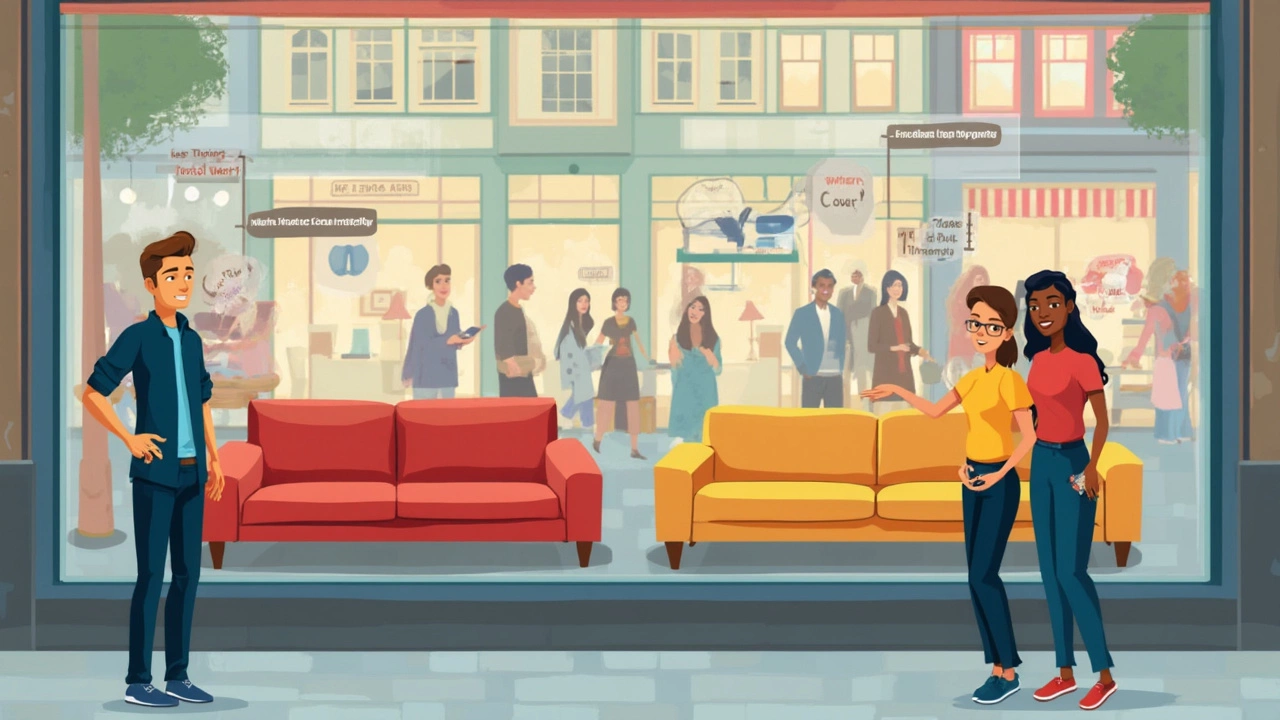
When to Splurge vs. Save
Trying to figure out whether to spend big or keep it cheap on your new sofa? Here’s the real talk: some stuff is worth the money, and other things you can totally cut corners without regret. The goal is to get the best value out of your sofa budget and make the most of your space and lifestyle.
You should splurge if:
- Your sofa is the main hangout spot in your home—think Netflix, naps, even occasional sleepovers. Cheaper sofas just don’t last getting flopped on every single day.
- You want something that lasts 7-10 years, not just a couple. Real hardwood frames, sturdy springs, and high-quality foam cost more upfront but save headaches down the road.
- Style and fabric matter to you. High-performance, easy-to-clean fabrics (like Crypton or Sunbrella) and unique designs aren’t cheap, but they can transform a room and survive real life—think kids and pets.
You can save if:
- The sofa is for a space that barely gets used, like a guest room or a formal living room. Here, looks matter more than tough construction.
- You love switching up your decor every few years—no sense dropping a fortune on a piece you’ll want to replace soon.
- You're okay with basic designs and standard fabrics. Skipping custom or brand names can lower sofa price guide numbers fast.
Here’s a quick breakdown for what people usually spend and what they actually get at each range:
| Price Range | What You Get |
|---|---|
| $300-$700 | Quick fixes, okay for light use, may sag or peel fast |
| $800-$1,500 | Sturdier frames, better cushions, long-term comfort for daily use |
| $1,500-$3,000 | Top-quality materials, designer styles, custom fabrics, built to last a decade |
Don’t let price tags fool you, though. Some lower-priced couches have smart construction and are sold direct from the maker—so you get more for your dollar. Always check what’s inside, not just the brand or look. The right balance depends on your space, your habits, and your budget goals for buying a sofa.
Tips for Getting More Sofa for Your Money
Trying to stretch your sofa budget without ending up with saggy cushions in a year? You’re not alone. Most people want a sofa that holds up, feels comfy, and fits the room—without paying for fancy labels or stuff you don’t need. Here’s how to make your money go further.
- Skip the extras (at first): Don’t pay extra for toss pillows, fabric protection plans, or delivery if you can handle it yourself. Fancy extras add up fast. Focus that cash on the main build quality instead.
- Look beyond the brand: Big brands mark up for their name, but mid-range brands often sell similar quality for less. For example, people have found that even lower-priced sofas at IKEA can last years depending on use. Just check the frame and cushion fill info first.
- Right timing is key: Discounts really do happen, usually during big sales like Black Friday, Memorial Day, or when stores are clearing out inventory in late summer. If you don’t need the couch right away, waiting can save you hundreds.
- Know your materials: Hardwood frames (like kiln-dried oak, birch, or ash) last way longer than particle board or plastic. Dense foam cushions bounce back better than cheaper, hollow-feeling foam. Ask for these details, or check retailer websites—don’t just trust the price tag.
- Negotiate or price match: Furniture prices aren’t always firm. Plenty of stores will price match or cut you a deal, especially on floor models or if you’re buying more than one piece.
- Read real reviews: Look for reviews that mention how the sofa feels after six months or longer. People will be honest about daily use.
If you’re into the nitty-gritty, here’s a quick comparison of what you typically get at different sofa price guide points:
| Price Range | What You Usually Get |
|---|---|
| Under $600 | Basic foam, particle board frames, simple designs. Okay for light use. |
| $800-$2,000 | Solid hardwood/plywood frames, higher density foam, better fabric. Good for families. |
| $2,000+ | Premium upholstery, down cushions, custom options, brand name markups. |
As furniture designer Emily Henderson said,
“Put your main money into the core structure—think frame and cushion quality. You can always change the fabric or slipcover down the line.”
Don’t forget to check return policies before buying. If it turns out uncomfortable, you’ll want a backup plan. A little planning with your furniture budget now can mean a comfy seat for years to come—and money left in your pocket for the next big thing on your list.
Avoiding Common Sofa Shopping Mistakes
Let’s be real—shopping for a sofa isn’t just picking the prettiest thing within your sofa budget. A lot of people trip up and end up frustrated down the line because they missed some crucial details.
The biggest mistake? Not measuring your space (and your doorways!). I’ve heard wild stories—one couple had to get their new sofa craned through a second-story window because they couldn’t fit it inside the house. Don’t make this one up as you go—use a tape measure and double-check all the ways the couch needs to get into your home.
Another gotcha is ignoring fabric choices. Some fabrics soak up pet hair and stains like a magnet. Microfiber and performance fabrics do way better if you’ve got kids or pets jumping all over it. If you want your couch to look good after a year, this isn’t the spot to cut corners.
Ever sunk into a beautiful showroom sofa that felt like a rock at home? Not testing for the right comfort can be a painful (literally) and expensive lesson. Don’t pick a sofa just from a website photo. Sit, lounge, and if you dare, even nap on floor models before you buy.
Here’s another thing most folks don’t think about: the construction under the cushions. Cheaper sofas often use particleboard or flimsy frames, and those sag fast. Look for hardwood frames and check if the seat support system matches your sofa price guide expectations. Here’s a quick look at frame life expectancy based on what’s inside:
| Frame Material | Average Lifespan |
|---|---|
| Engineered Wood/Particleboard | 3-5 years |
| Pine | 5-7 years |
| Hardwoods (Oak, Maple, Beech) | 10-15 years |
Don’t get lured by trendy details like velvet or tufting if the construction is junk. A cool look can’t save you from a saggy seat or ripped seams.
Watch out for hidden fees and skim the warranty. Delivery, assembly, or return costs add up way faster than you’d expect. And while you’re at it, check what the warranty really covers. That glossy three-year coverage might not mean much if it only covers the frame and not the upholstery or cushions.
- Measure your space and access points (doors, stairs, elevators).
- Check fabric durability and cleanability—especially with pets or kids around.
- Test comfort in person whenever you can.
- Ask about the frame material and spring or webbing type.
- Factor in the costs for delivery, returns, and any extra services.
- Understand the warranty details—don't just assume everything’s covered.
If you keep these tips in mind, you’ll dodge the classic sofa shopping mistakes and get way more value out of your sofa budget.

